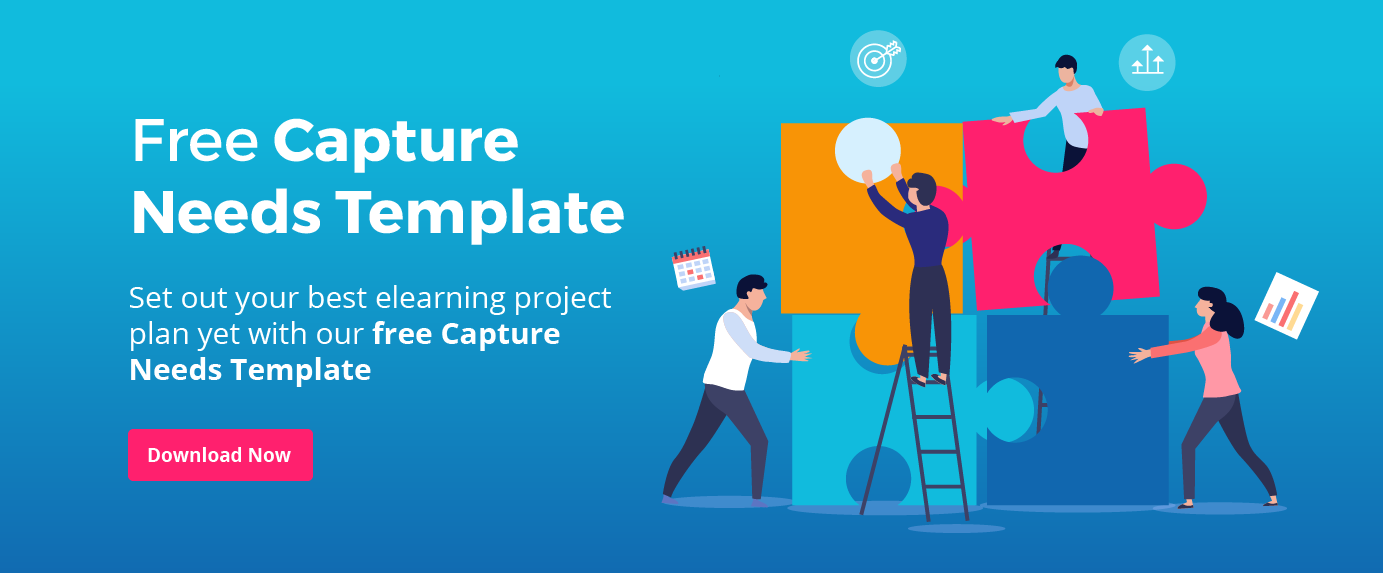Top 5 books every elearning designer should read
4 minute read
We’ve pulled together the top five books every elearning designer should read, with help from our Elucidat community. These five books cover all the bases, from how people learn, to what makes learning and habits stick, and how to design with these elements in mind. All these books are pacy, practical, and actionable. Whether you’re new to elearning or an old hand, take a look!

Top 5 books for elearning designers
1. Design for How People Learn – Julie Dirksen
We’re listing ‘Design for How People Learn’ at the #1 spot because it’s such a great book for those starting out in learning design (It’s also a great reminder for experienced designers too). Yes, it contains theory around how people learn, remember, and take on new habits, but it’s smartly packaged up into practical step-by-step guidance.
It starts with why – the killer question of any good learning design – and helps you identify what kind of change your learning needs to make. Is it a motivational problem, a behavioral gap, or a knowledge gap?
Julie Dirksen guides you through what to do to meet different kinds of needs with humor, helpful examples, and illustrations. It’s the kind of book every elearning design should have on their desk to return to time and time again.
2. Map it! The hands-on guide to strategic training design – Cathy Moore
Cathy Moore is renowned for focusing on driving action over knowledge. She urges designers to focus on what they want people to do (as a result of training) and not get caught up in dumping content.
So, if you’re tempted to reach for a PowerPoint or doc full of content as your starting point for creating elearning, stop and read this book! A practical step-by-step guide, ‘Map it!’ gives you a framework to identify outcomes and work back from those. Your content will play a part at some point, but probably not all of it and certainly not at the start.
This book is great for novice elearning designers, subject matter experts, and whole elearning teams to use as a way of working. It complements our own thinking in our Capture and Conceptualize guides from the 5Cs.
3. How People Learn: Designing Education and Training that Works to Improve Performance – Nick Shackleton-Jones
‘How People Learn’ is a great book to read if you work in corporate L&D as it not only bottles up learning theory and psychology, but presents ideas and strategies for employing that in workplace learning to drive performance.
Nick Shackleton-Jones slices through common approaches to learning (and throws many out the window!). Instead, he provides a fresh view of what kinds of learning experiences and resources support real performance change in the modern age. Read this to come out with a new list of to-dos.
4. Make It Stick: The Science of Successful Learning – Brown, Roediger, McDaniel
Neuroscience can be a world that loses or drowns practitioners that try to understand it. ‘Make it Stick’ helps the science of learning feel tangible and applicable, even though it doesn’t specialize in workplace learning.
It uses and explains real-world case studies to show why, for example, spaced practice works over the unspaced practice. It’s unpretentious, accessible, and a firm favorite for those who want to pluck out techniques that aid long-term retention and habit building, without having to talk about the role of the hippocampus!
5. Design Thinking for Training and Development: Creating Learning Journeys That Get Results – Sharon Boller & Laura Fletcher
‘Design Thinking’ is really about putting people and their ‘problems’ at the forefront of design, and it’s used by product design teams all over the world. This book puts design thinking methodologies at the heart of training and development and helps you stay people-focused with your approach.
It’s a great book if you want help with design process and methodology, as it encourages needs capture, interactive design, user testing, and more, all of which help keep your project on track and laser-focused on fixing ‘that’ problem.
Take it further
If reading these isn’t enough, or you want more immediate help to get your project off the ground, then you might find our 5Cs guides helpful. These walk you through the five essential steps to creating elearning that works, starting with capturing the real needs or problems it needs to focus on.
For more dedicated support and guidance on effective elearning design, there’s always the Elucidat Professional Services team, there to help coach, create, and support authors with their projects.




